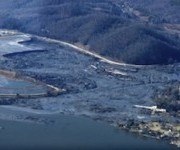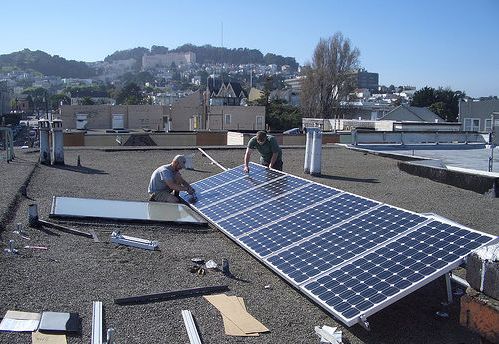David Brosch had a problem many Americans can relate to. He wanted solar power, but wasn’t able to put it on his house. His roof had the wrong orientation, a tree partially blocked the sun, and it was more than he could afford. Many of his neighbors were in the same situation — some were renters, others were too busy to handle the process of an installation on their house.
They got together and formed a company, University Park Community Solar (UPCS), and approached a local church with a large roof and good solar orientation. In exchange for placing solar panels on it’s roof, the church would be guaranteed a long-term low price of electricity. David told us: “We wanted a project that could stand on it’s own. Not one funded by donations, but something that was financially viable that folks would be willing to invest in. A solar project done right can turn a profit, so we thought, let’s pool our money and do it together.” Sounds simple enough, right?
As far as we can tell, no one had ever pulled off a project quite like that before. UPCS needed to come up with the right legal entity, faced Securities regulations that restrict non-accredited investors (i.e. non-wealthy people) from investing in the project, and had to figure out how to utilize federal credits that required “passive income” to apply it to. It took nearly three years but this Maryland group finally installed the 21.9 kW system this past May. It is believed to be one of the first community-initiated and owned solar electric systems in the U.S.
The project is expected to generate a 7-8 percent return on investment over the life of the project for the 30-plus area members. By providing clean electricity for the Church of the Brethren, UPCS will be reducing the region’s reliance on coal-based power. PEPCO, the major electric utility for Washington, D.C., and the Maryland suburbs, purchases more than half of its power from coal-burning generating plants, which get their coal from destructive mountaintop removal mining operations in Appalachia. [Check http://www.ilovemountains.org to see if your electricity comes at the expense of mountains too.]
You’d think the federal government would do anything it could to support the replication of the University Park model. It’s a market-based solution to the unemployment problem, while also helping achieve clean energy and climate objectives. But it’s actually the federal government that’s in the way.
One of the biggest roadblocks is the 1933 Securities Act [PDF], which was designed to protect “widows and orphans” from crooked securities dealers during the era’s financial depression. Today it prevents people who make less than $200k a year or who hold liquid assets of less than $1m from investing in a whole host of unregistered securities, including most clean energy projects. There should to be a way for average people to invest without the need for deal-killing securities registration requirements.
Another roadblock is that most of the incentives for clean energy development are structured as tax-credits [PDF], so most potential community organizations (including non-profits like churches and schools, Native American tribes, etc.) can’t take advantage of them. Because UPCS completed their project prior to the end of 2010, it can trade the tax credits for a 30 percent grant through the U.S. Treasury as a result of the federal stimulus bill. However, solar projects completed after 2010 will not be able to receive the grant, reducing their financial viability.
University Park Community Solar ran into every bureaucratic red-taped government wall and jumped over, dug under, and blew it up. They changed the model, one of many groups across the country working not only to clean up but to democratize energy in America with community solar power. They’re already planning a second project. We hope others follow their lead.
(written with Daniel Rosen)



